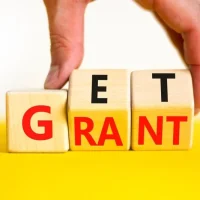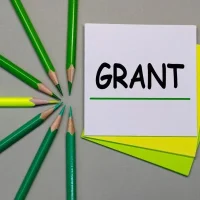Deadline: 23-Jul-20
The National Fish and Wildlife Foundation (NFWF) has announced a call for proposals for 2020 Southeast Aquatics Fund.
The southeastern U.S. harbors a diversity of aquatic species unparalleled in the nation. Nearly two thirds of U.S. fish species, over 90% of U.S. mussel species and almost half of the world’s crayfish species call the rivers and streams of this region home1. However, land use changes, habitat fragmentation, declines in water quality and availability, and invasive species introductions have greatly impacted these species. Notably, the number of at-risk aquatic species in this region is greater than anywhere else in the United States, with many species petitioned or candidates for listing under the Endangered Species Act (ESA).
To help conserve habitats for a wide range of aquatic species, the National Fish and Wildlife Foundation (NFWF) is soliciting proposals to restore habitats and improve water quality in targeted river basins and watersheds of the Southeast. The Southeast Aquatics Fund is a competitive grants program that supports watershed-based restoration that will improve the health of these aquatic systems and secure populations of native freshwater aquatic species. By promoting a habitat based approach a diversity of species benefit, from game species to at-risk species, helping reduce the risk of future listings under the ESA.
Program Priorities
- Competitive proposals will address the threats facing the species within the above-listed geographies by implementing one or more of the following strategies identified below. (Please note that proposals in the “Gulf Coastal Watershed Working Lands Conservation and Management” Geographic Focal Area may only apply for the first program priority.) Proposals should demonstrate how project activities will advance specific goals and objectives of the Longleaf Forests and Rivers Business Plan and other relevant conservation plans, including, but not limited to, State Wildlife and Forest Action Plans, regional watershed management plans, fish habitat partnerships, and federal species recovery plans. Lastly, NFWF is interested in bringing forward projects that have strong water quality, water quantity benefits, and/or carbon benefits.
- Provide Technical Assistance and Outreach – Support needed capacity to conduct outreach to private landowners to increase awareness of conservation need, appropriate practices and available cost-share programs to improve water quality/quantity or connectivity. This includes providing technical assistance to develop management plans and guidance on best management practice implementation; and the coordination of stakeholders within the watershed to share information and build consensus around priorities for targeting activities to most effectively and efficiently achieve outcomes.
- Agricultural and Forestry Best Management Practices –Support agricultural and forestry practices that reduce nutrient and sediment runoff from the land and conserve water where assistance is needed in addition to or outside of available Farm Bill and other cost-share programs. These practices may include, but are not limited to, livestock fencing, irrigation retrofits, riparian buffers and vegetative buffers around agricultural ditches, rotational grazing, cover crops, reducing nutrient inputs, and restoring streambanks impacted by erosion.
- Restore and Enhance Riparian and In-stream Habitat –Restore wetland, streambank, and instream habitat in prioritized areas of a watershed that otherwise would not be addressed through agricultural or forestry best management practices to support key functions of the watershed and improve native aquatic species populations. Proposals should discuss how the project has been prioritized in the watershed to maximize cost efficiency and conservation outcomes for the target species.
- Improve stream crossings – Restore connectivity for fish passage and reduce sedimentation by removing or retrofitting stream barriers and stream crossings (culverts, concrete fords). Preference will be given to projects that remove or retrofit high priority barriers or crossings within watersheds where barrier/crossing surveys and/or assessments are being developed or have been completed with an emphasis on lower cost/high gain methods in locations known to fragment habitat for priority species.
- Assessment, Prioritization and Planning – Support the assessment of barriers and crossings within a watershed in order to identify which should receive highest priority for removal or retrofitting based on probable gains for target species. Barriers to habitat connectivity should be identified as a main factor impacting targeted species, and if a barrier assessment for the area already exists, strong justification should be provided for how the proposed work will build upon the existing assessment. Emphasis will be placed on lowest cost/highest gain opportunities, and identifying willing landowners.
- Monitoring – Conduct monitoring to understand the population status and habitat conditions for bridled and trispot darter, Villosa mussels (Alabama rainbow, Coosa creekshell), Black Warrior waterdog and flattened musk turtle within the Conasauga, Locust Fork and Middle Coosa watersheds.
Funding Information
- Over $2.7 million is available in grant funding in 2020. Grant awards are expected to range from $150,000 to $350,000, depending on the overall scale and duration of the project.
- Project Period: Anticipated completion time for funded projects typically will be 24 – 36 months following finalization of a grant agreement. The project narrative must include a clear timetable or schedule for project completion.
- Project start and end dates should define the period during which all proposed work is accomplished, all requested funds are spent and all matching funds are spent or applied. Projects may be a discrete part of a longer-term project, provided there are definable outcomes for the proposed phase of the overall effort.
- Match Requirement: Projects must have a minimum match of 1:1 non-federal cash or in-kind. Larger match ratios and matching fund contributions from a diversity of partners are encouraged and will be more competitive. Applicants are encouraged to describe federal partner contributions as well in the proposal narrative,
Geographic Focus
Geographic focal areas and funding priorities for the Southeast Aquatics Fund are informed by:
- The Longleaf Forests and Rivers Business Plan, which outlines NFWF’s goals and strategies for freshwater habitat restoration and enhancement. A suite of aquatic species were selected as indicators of healthy freshwater habitat in prioritized watersheds, including the bridled and trispot darters, Alabama rainbow, Coosa creekshell, Black Warrior waterdog and flattened musk turtle.
- The Southeastern Aquatic Biodiversity Conservation Strategy completed in 2016 by the University of Georgia River Basin Center and Tennessee Aquarium Conservation Institute. This science-based, systematic assessment identified watersheds critical to southeast aquatic conservation based on the richness, endemism, and imperilment of freshwater fish, mussel, and crayfish species.
- State Wildlife and Forest Action Plans, with additional input from regional and state conservation partners.
In 2020, proposals to the Southeast Aquatics Fund will be considered from the following three geographies. The first two are driven by goals set in NFWF’s Longleaf Forest and Rivers Business Plan mentioned above, and the third is driven by new funding partner priorities:
- The Alabama and Mobile-Tombigbee Basins: Projects will only be considered within the three Hydrologic Unit Code (HUC) 8 watersheds listed below. Priority will be given to projects within specific tributary watersheds benefitting focal species where indicated:
- Conasauga (priority tributary: Holly Creek)
- Focal species: Bridled and trispot darter; Villosa mussels (Alabama rainbow, Coosa creekshell)
- Locust Fork
- Focal species: Black Warrior waterdog; flattened musk turtle
- Middle Coosa (priority tributary: Big Canoe Creek)
- Focal species: Trispot darter
- Conasauga (priority tributary: Holly Creek)
- The Apalachicola-Chattahoochee-Flint (ACF) Basin: Projects will be considered that support sufficient water flows for native freshwater species, with particular interest in projects associated with agricultural lands.
- Gulf Coastal Watershed Working Lands Conservation and Management: Projects will be considered within coastal HUC-6 watersheds within the five Gulf Coast states: Alabama, Florida, Louisiana, Mississippi and Texas. Within Florida, priority may be given to projects within HUC-6 watersheds in the Panhandle from the Alabama border east to the Ochlockonee watershed and the Suwannee watershed, particularly when aligned with projects supporting the RESTORE Council.
Eligibility Criteria
Eligible and Ineligible Entities
- Eligible applicants include non-profit 501(c) organizations, U.S. Federal government agencies, state government agencies, local governments, municipal governments, Indian tribes and educational institutions.
- Ineligible applicants include businesses, unincorporated individuals and international organizations.
Ineligible Uses of Grant Funds
- NFWF funds and matching contributions may not be used to support political advocacy, fundraising, lobbying, litigation, terrorist activities or Foreign Corrupt Practices Act violations.
- NFWF funds may not be used to support ongoing efforts to comply with legal requirements, including permit conditions, mitigation and settlement agreements. However, grant funds may be used to support projects that enhance or improve upon existing baseline compliance efforts.
For more information, visit https://www.nfwf.org/programs/southeast-aquatics/southeast-aquatics-fund-2020-request-proposals









































